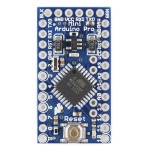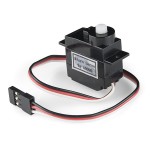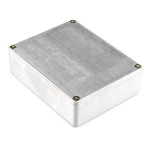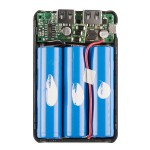I started work on my first Arduino project today, though I have yet to get the hardware.
The plan is to build a servo controller that can trigger the shutter on my Panasonic LX3 camera that lacks any sort of remote shutter release. I started looking into this before and found Cris Benton struggled with the problem as well. I’m planning to go down a path he blazed some years ago: put a servo on it. I’ll admit that I would have been happy to do exactly as he had, but I decided it would be easier to build a controller on an Arduino than it would be to figure out the Gentles website where he says he bought his.
My interest is to use my LX7 as a camera for timelapse photography. This means mounting the camera to a timelapse robot (a Syrp Genie or Alpine Labs Radian) and triggering it from the robot with an EOS-style 2.5mm shutter release cable. It’s very important to state that the robot is the time authority, the controller I’m trying to build just translates the signals from the robot into a servo movement that physically depresses the shutter button on the camera. It’s sort of Rube Goldberg, and that makes it extra awesome.
I’m planning to build this around a SparkFun Arduino Pro Mini driving a tiny little servo and powered by a whopping big battery pack in a cool aluminum case. A tripod screw through the top of the case would secure the camera, an nut in the bottom would attach it all to the robot. With luck I’ll be able to copy Cris’ hot shoe mount for the servo. Unlike Cris’ setup, I’m planning to power the camera as well as the servo controller with the battery.
The LX3 has just a 3.3v 1090mah battery rated for 380 pictures, but I need to shoot 2000 in a single timelapse. I found the rating was conservative for my usage, but rather than risk having to swap batteries mid-shoot, I figured I’d be better off adding external power. There’s some debate about the capacity rating of the battery pack I selected, and I have no idea how the camera’s power consumption changes when connected to an external power source, but I’ll learn.
I couldn’t find reasonable panel mount solutions for all the connections I have to make, so I’m just going to have a bundle of cables hanging out of the sweet project box:
- 2.5mm TRS jack for incoming shutter signal
- mini USB for charging the battery
- servo cable
- proprietary Panasonic power cable
I don’t have any of the hardware yet, but I started on the code. I’m calling it “Shutterfingers” and it’s in Github now. It’s my first Arduino sketch and it’s entirely untested. Any tips or suggestions would be appreciated.
Here are pictures of some of the components, CC BY-NC-SA SparkFun Electronics:



